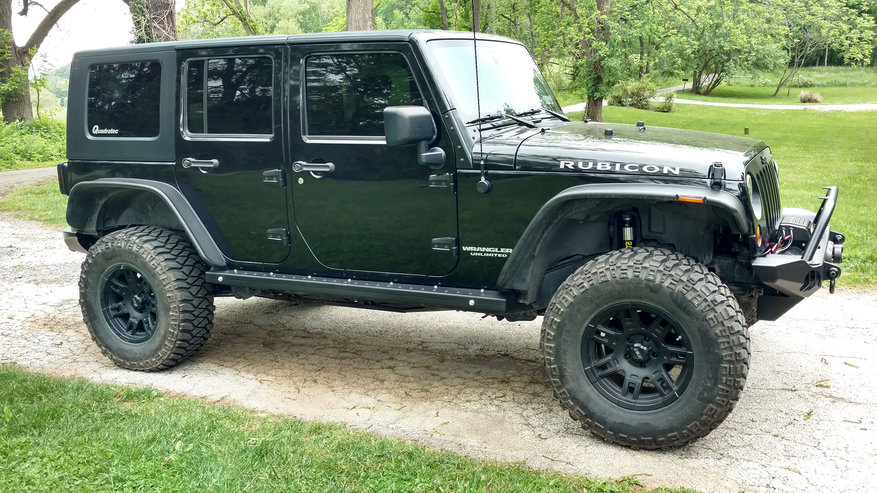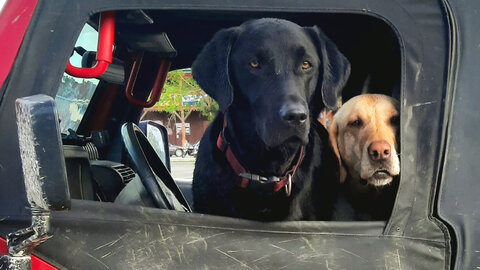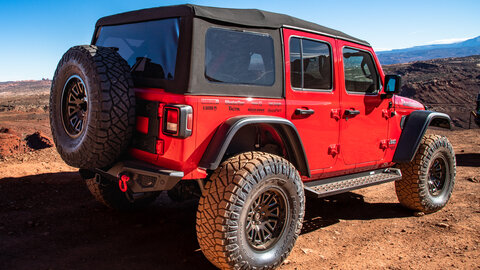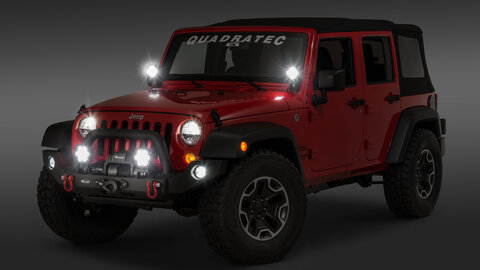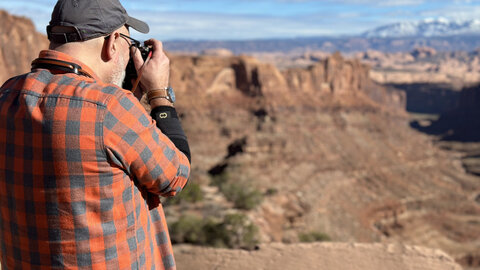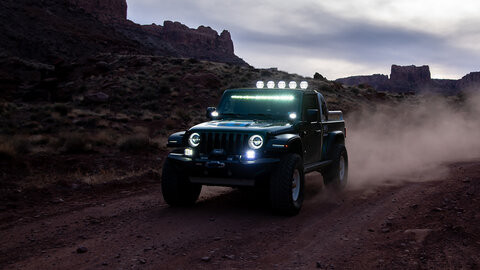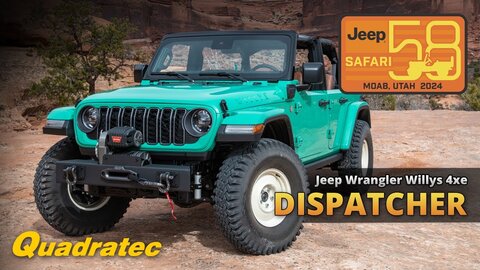by Scott Ammerman
Quadratec Channel Correspondent
I received a lot of flak from close friends when I bought my Jeep - not because they thought it was a bad decision, but because they were surprised I hadn’t done it sooner. See, I spend a lot of time in the mountains, so owning a vehicle with this much utility actually makes a lot of sense. The other thing they gave me trouble about was my automatic transmission. Of all the vehicles I’ve owned in my lifetime, this is the only one that is “missing a pedal”.
Of course, once I explained that I’ll be going rock crawling a lot and this was an intentional choice, they understood the reasoning. Getting diagonal on sea of rocks and using a clutch is not impossible, but only having to focus on “go” and “stop” pedals makes things a whole lot simpler. Believe me, I’m not talking down on manual transmissions! I own two other cars with manual, so at least my friends can’t call me a total sellout.
With that said, automatic transmissions do require a little more attention than manuals. I’ll save you all the tech-speak as automotive sites like Jalopnik have great descriptive articles on how automatics actually work, but for this piece we want to focus on servicing the transmission so it can continue to perform well.
The ATF +4 inside my 2008 Wrangler’s 42RLE automatic transmission is made of pretty durable stuff. Of course, nothing lasts forever - this fluid needs to be clean to do its job, and the filter inside the transmission sump should be replaced regularly to make sure it stays that way. We’ve already added a Flex-a-Lite Translife cooler to drop the operating temperatures, but this service will keep things running smoothly.
My transmission pan shows no signs of removal since it rolled off the showroom floor, and with just over 120k on the odometer, I’m at the mileage Jeep recommends for a transmission service on “light duty” use. If frequently used for off-roading, snow plowing or towing, the interval is 60k. Many people actually recommend changing it every 30k if you tackle challenging terrain on a regular basis. Since this Jeep led a very boring life before I got behind the wheel, I’m not too concerned about the lateness of this first filter change, but I’ll be doing it more frequently moving forward.
List of parts/tools needed for transmission service:
- Transmission fluid filter and o-ring (Purchased from my local Jeep dealer)
- Five quarts of ATF +4
- A gasket scraper
- A can of brake parts cleaner (or a parts washer, if available)
- High temp black RTV
- 10mm socket (I used both ⅜” and ¼”)
- ¼” universal joint
- ¼” extension, around 8”
- 10mm offset wrench
- T-25 Torx bit
- A large fluid catch pan
- A large flat bladed screwdriver or prybar to separate the seal (possibly a hammer)
- A long funnel for adding transmission fluid
- 18mm socket (for removal of Rubicon factory transmission skid plate, if equipped)
..and here we go:
Performing a 42RLE transmission service isn’t terribly complicated, but it does have a few tricky spots because of the exhaust pipe that runs sideways covering the rear of the pan. There are three bolts back there that can be more than a little frustrating. I would recommend starting with them - at least break them free before you have fluid leaking all over. That way, if you need to buy or borrow more tools, you won’t have to rely on another vehicle. Also, this guide is for a basic transmission service and the transmission actually holds somewhere around 12 quarts of ATF. This procedure is preventative maintenance and will not drain the torque converter or get every single drop of fluid out, and is not meant to fix shifting quality issues if you are experiencing them. If your fluid appears or smells burned, you may want to pay a shop to do a full ATF flush.
This is also a messy job, no matter how you look at it. Having a catch pan that is larger than the transmission pan is certainly helpful, but doing this job without getting ATF all over you is unlikely. I’ll try to give you warning before all the really messy parts. This is a perfect opportunity to wear clothes you really don’t like.
If you have a Rubicon factory skidplate under your transmission, remove the three 18mm bolts and set them out of the way.
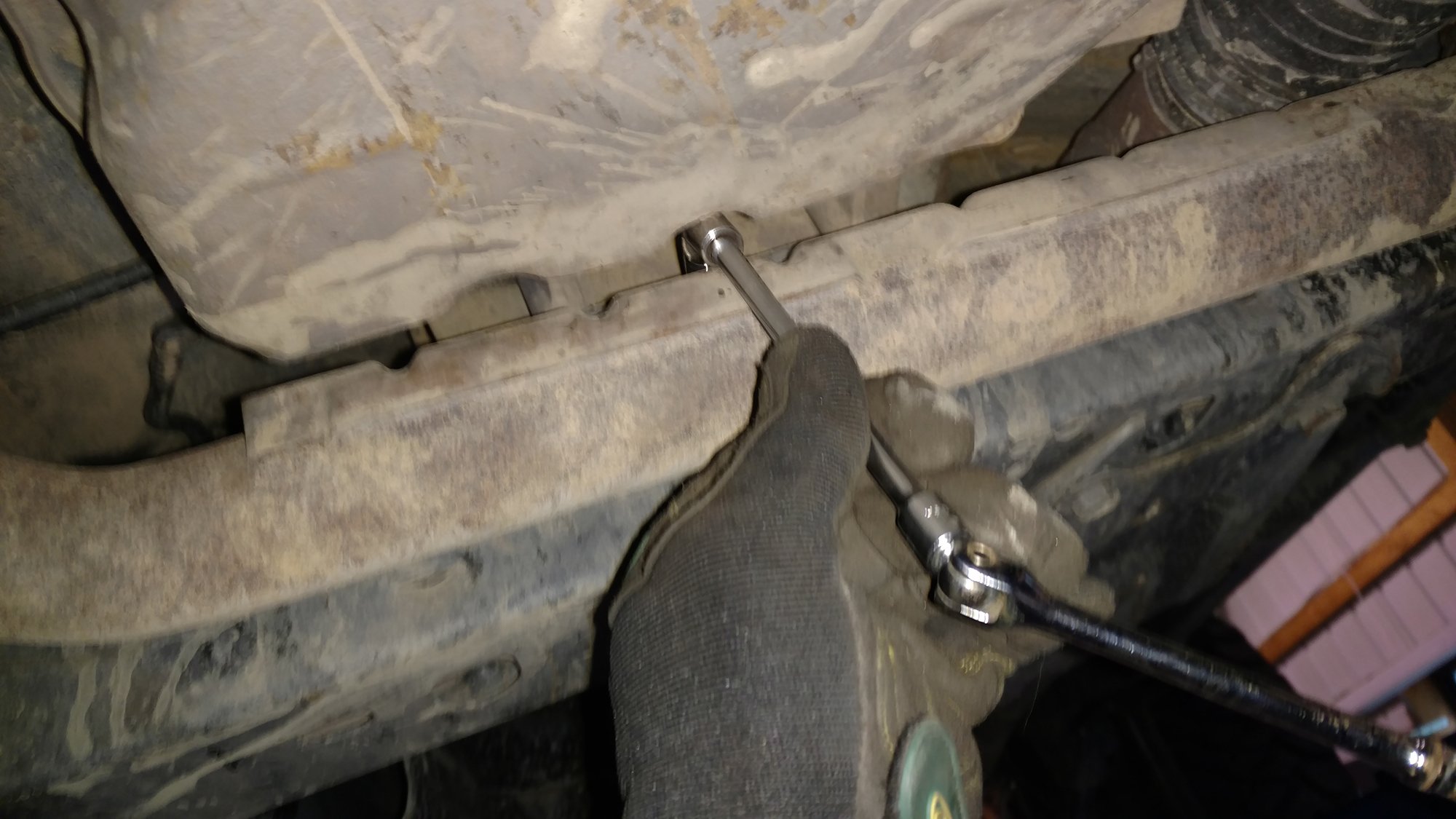

Starting at the back, remove the 10mm bolts that hold the pan to the transmission. For the two towards the middle, I used a ¼” universal joint and 10mm socket. Pushing up on the exhaust pipe gave me a little more room to work as it is a tight area. The one all the way over to the driver’s side was easier with a 10mm offset box wrench than it would have been with a socket. The more bolts you remove, the more fluid will start coming out, so have the catch pan ready underneath.
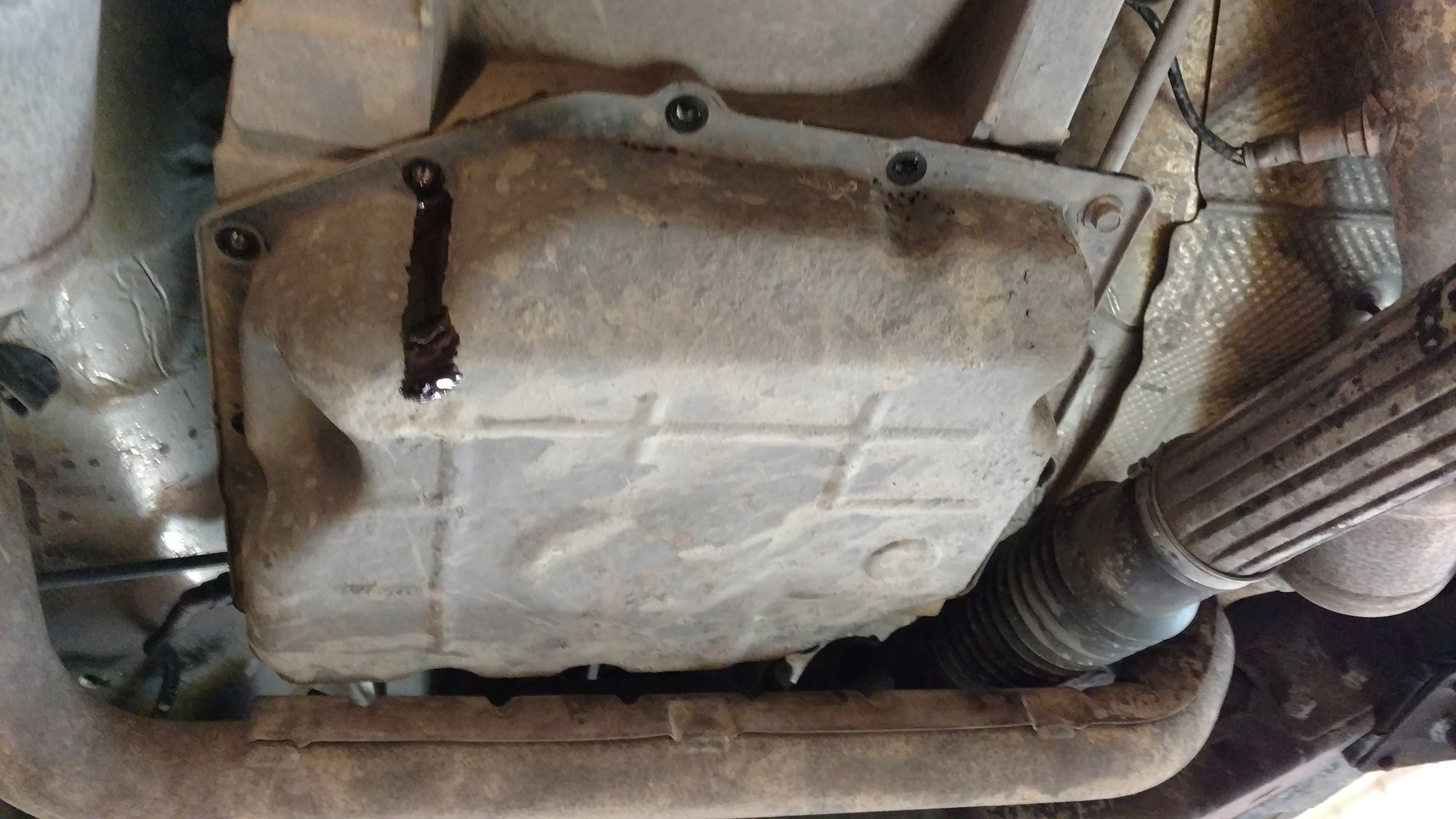
Keep two bolts on opposing corners loose, but threaded in a few turns, just in case the sealant decides to let loose before you’re ready. When you do break the seal between the case and the pan, these will keep it from falling down with a splash and spreading enough red liquid all over your workspace to make it look like a crime scene.
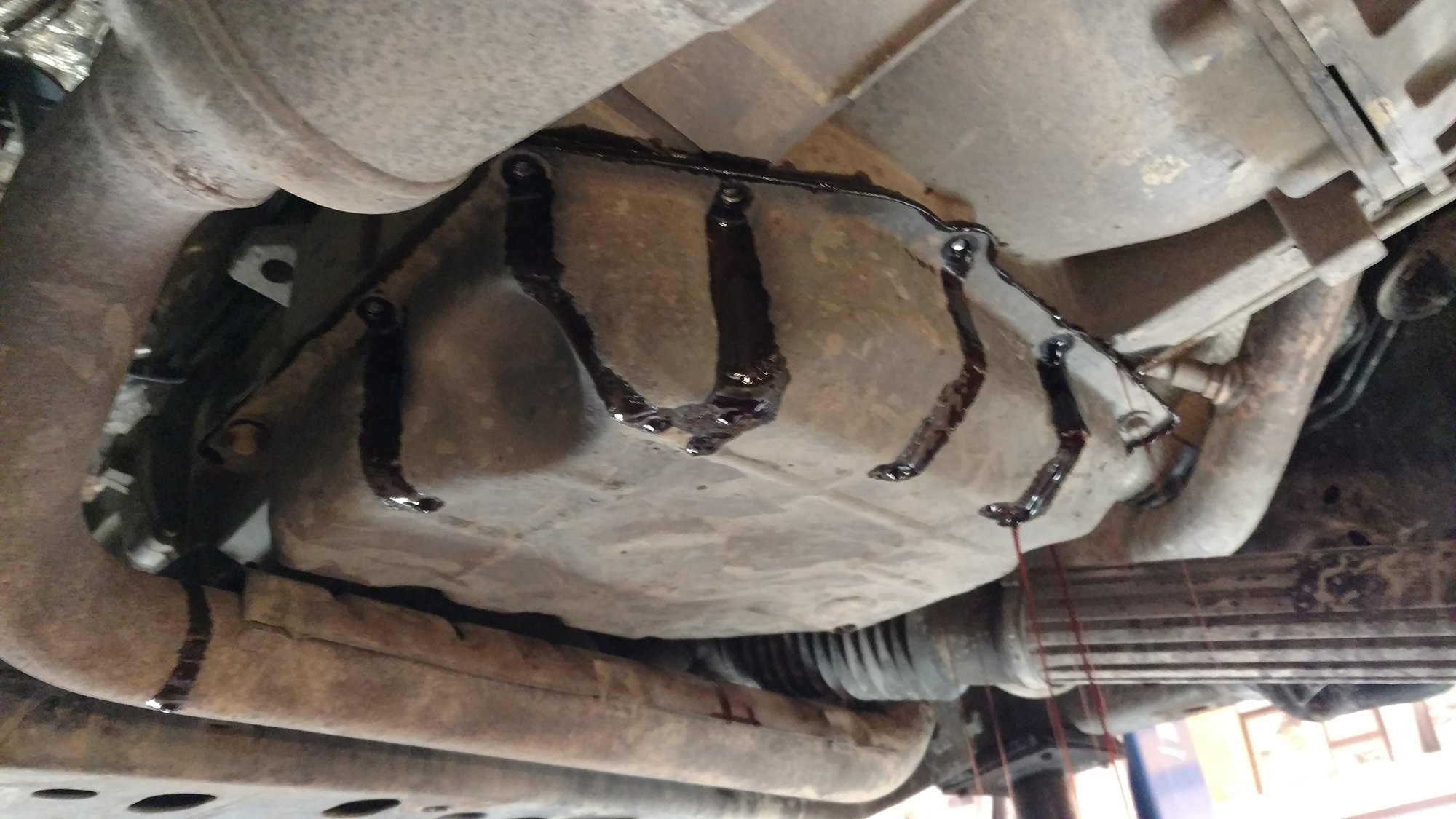
With all the bolts but those last two removed, insert the edge of your screwdriver or pry bar in between the pan and the transmission case on the front side. A twist of the handle was all it took to break the seal on mine, so be ready for an ATF waterfall on all sides. A few gentle taps with a hammer might be required for a stubborn one, but in either case, be ready to get your hands out of the way.
After the bulk of the transmission fluid stops flowing, it’s time for a balancing act. There is still about two quarts of fluid left in the pan, and you need to clear the exhaust pipe and the filter inside while removing it. Support the pan with one hand in the middle like you’re delivering a pizza, and remove those last two bolts. Go slowly, you need to move forward and down to clear those obstacles without spilling. When you get it clear of the transmission, drain it into your catch pan.
The valve body and filter will continue to drip transmission fluid, so leave your catch pan in place. Take the transmission pan elsewhere for cleaning. First, remove the magnet from the bottom that catches bits of metal suspended in the fluid and wipe it clean. I cleaned it and put it back in the bottom of the pan so you know what you’re looking for. In my case, the particles were barely visible and very tiny, so that is a good sign my transmission internals have a lot of life left. Larger, sharp edged particles are certainly a sign of trouble.

Clean the pan as much as possible by wiping it out with a shop towel to remove any sludge, then use a scraper to remove all the silicone sealant from the pan as well as the transmission case. Give it a final spray down with brake parts cleaner to make sure you got everything, and set it aside to dry.

Next, slide back under your Jeep and remove the two T-25 Torx bolts holding the filter assembly, and drop it gently into the pan. Make sure you locate and remove the original o-ring, as it may be in the filter or inside the tube. Put the new o-ring on your new filter, slide it in and bolt it back in place.
With everything on your transmission pan clean and dry, apply a thin bead (like 6mm wide) of black RTV around the perimeter of the pan, being careful to encircle the bolt holes and not leave any gaps. Drop that clean magnet back in its little indentation in the bottom of the pan, and then reinstall the transmission pan before the RTV cures (mine had to be done within 10 minutes). Torque the bolts to 14.5 ft/lbs, as you don’t want to deform the pan around the bolts.
After reinstalling the pan, remove the dipstick and add four quarts of transmission fluid. Put the dipstick back and start the Jeep and allow it to run for about five seconds, and then shut it off. Wait 30 seconds and repeat. Now check the transmission fluid level - it may be around the bottom of the dipstick in the cold range, or slightly below. Start the Jeep back up, and run it through each gear with your foot on the brake, staying in each for around 15 seconds. Do this twice, and allow the engine to run for about 20 minutes to get up to operating temperature. Check the fluid with the engine running, and fill to the safe range between the “hot” marks. I added a total of just under five quarts.
Now, head out and take about a 20-mile drive and then check the fluid level one last time while parked on a completely level surface - just to make sure everything looks good.
The Jeep Wrangler’s 42RLE transmission can certainly be reliable, but fluid temperature and quality are essential to ensuring a long life. For the next service, I may add a drain plug to the bottom of the factory sump to make this process a little easier.












